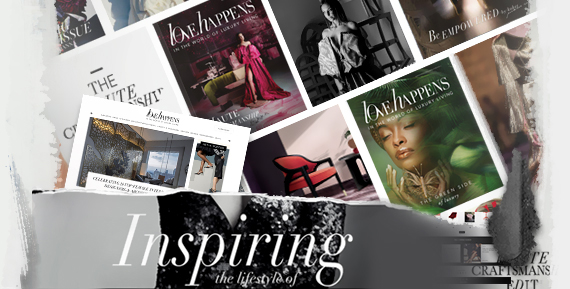From Paintings to Photos and Prints: How Wall Art Has Evolved Through the Years

The evolution of wall art serves as a reflection of artistic expression, cultural shifts, and technological advancements across centuries. From the ancient murals and intricate tapestries of yore to the eye-catching art prints and high-tech digital displays of contemporary times, wall art has certainly come a long way as a mechanism for many artists to showcase their creativity.
Let’s examine the rich history of this medium by going back to various trends that shaped its development, allowing us to better appreciate the way we view and use wall art in our spaces.
Origins of Wall Art
Wall art traces its origins back to ancient civilizations, where it was used as a means to honour deities, tell stories, or represent religious beliefs. For instance, the Egyptians decorated tombs with murals thinking that these will help create a pleasant afterlife for the deceased. Meanwhile, mediaeval Europe saw the rise of frescoes and tapestries that depicted biblical scenes and royalty, thus showcasing the societal beliefs and political structures (e.g., the divine right of kings) of their time.
Wall Art as High Culture
The Renaissance period, which began around the 14th century, marked a shift in the purpose and quality of wall art. Artists like Leonardo da Vinci and Michelangelo emphasised scale and perspective in their pieces, allowing them to create pieces with realistic depth and dimension. Churches and palaces commissioned artists to paint large-scale murals and ceiling paintings, which made use of dramatic colouring and lighting as well as detailed storytelling meant to emotionally move the viewer. From the more subdued use of the medium in the past, wall art had flourished into an art form considered as high culture.
Reproducing Art for the Masses
The Industrial Revolution that took place around the 18th century led to a shift from handmade to mass-produced art, thanks to technological innovations that enabled the reproduction of famous art pieces into lithographs, photos, and prints. This meant that more people were able to own copies of famous artworks at a reasonable price point, allowing them to decorate their walls with those iconic paintings. The Art Nouveau and Art Deco movements that followed also led to the introduction of nature-inspired patterns and elegant designs into the mainstream by artists like Alphonse Mucha.
Art for Art’s Sake
With the 20th century came modern art movements such as Cubism, Abstract Expressionism, and Surrealism that challenged traditional techniques and subjects. “Art for art’s sake” became a recurring theme for modern artists, inspiring many artworks that heavily experimented with form and colour. Instead of aiming for realistic depictions, modern artists instead wanted to capture raw emotions and challenge the perceptions of viewers through abstract ideas.
Street art also started to gain more popularity as an art form, adorning urban areas and public locations with thought-provoking murals that were often territorial or rebellious in nature. These street artists commonly used spray paint to create their pieces, though some also used markers, posters, and stencils.
Emergence of Photography
The rise of photography saw a significant shift in the history of wall art. Photographers were able to capture sceneries with a degree of realism and precision that was unattainable in paintings. Then, as camera technology improved over time, various genres of photography also emerged.
For instance, artistic photography focused on photography as a medium for self-expression, fashion, and societal critique. These types of photos are what pushed photography into an established and respected art form. Additionally, black-and-white photography became popular as a means for photographers to showcase their unique styles while working with the limitation of colour.
The digital age also made photography much more accessible, thanks to digital cameras and smartphones equipped with high-quality lenses. Meanwhile, photo editing software allowed photographers to have more control over their pictures. Even home decor trends have also embraced photography, often shown in large format prints and intricate picture frames to enhance the photo’s effect.
Minimalism and the Shift to Personalised Wall Art
The late 20th century saw the rise of minimalism, which focused on simplicity and decluttering. This trend extended to wall arts as well, which led to the popularity of black-and-white art prints and monochromatic art. Personalised wall art also became more popular as more people expressed interest in creating displays that reflect their own stories and style preferences. This led to many homes showcasing photo collages and gallery walls that functioned not only as decors but also as a medium to tell deeply personal stories.
Interactive Wall Art and Digital Platforms
Today’s technology has transformed wall art to become more interactive than ever. Digital art installations and augmented reality pieces are not only meant to be seen but invite viewers to engage with them as well. Online platforms have also become the go-to place to share and even sell artworks, allowing for democratised access to art prints while also creating a dynamic market for artists and art enthusiasts alike.
The journey of wall art showcases the ever-changing ways in which art is created, displayed, and distributed as it is influenced by the changing times. In particular, photography and digital platforms have made it so that wall arts are now more accessible than ever, allowing people to capture breathtaking scenes as well as personal moments into wall displays that they can always admire.
Feature Image by KOKET
More to Love!
Our Latest Obsession: 3D Wall Art
Fashion as Art, New Print Collection by Lars Wallin for Desenio





